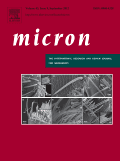
MICRON
metrics 2024
Exploring the Frontiers of Biological and Material Sciences
Introduction
MICRON is a distinguished academic journal published by Pergamon-Elsevier Science Ltd, focusing on the fields of Cell Biology, Materials Science, Physics and Astronomy, and Structural Biology. Established in 1978, this international journal has been a vital conduit for research and advancements in biological and material sciences, providing a platform for both foundational studies and innovative techniques. With an impressive impact factor anchored in the Q2 and Q3 quartiles across various categories in 2023, MICRON continues to attract a diverse range of submissions, showcasing significant findings that contribute to the scientific community. Although it does not currently offer Open Access, it is widely recognized for its rigorous peer-review process and high-quality publications. Addressed to a global audience, MICRON serves as an essential resource for researchers, professionals, and students seeking to deepen their understanding and engage with the latest developments within its multifaceted fields of study.
Metrics 2024
 0.45
0.45 2.50
2.50 2.20
2.20 98
98Metrics History
Rank 2024
Scopus
IF (Web Of Science)
JCI (Web Of Science)
Quartile History
Similar Journals

MICROSCOPY AND MICROANALYSIS
Navigating the Frontiers of MicroanalysisMICROSCOPY AND MICROANALYSIS is a prestigious academic journal published by Oxford University Press, specializing in the interdisciplinary fields of microscopy and microanalysis. With an ISSN of 1431-9276 and an E-ISSN of 1435-8115, this journal serves as a vital platform for the dissemination of high-quality research findings, innovative methodologies, and advancements in instrumentation techniques from its inception in 1995 to its ongoing contributions projected to 2024. As a Q3 ranked journal in the category of Instrumentation, it plays a crucial role in shaping the future of microscopy by providing researchers, professionals, and students with insights into cutting-edge technologies and applications. Although it does not currently offer open access, the journal remains committed to the academic community by maintaining rigorous peer-review standards and producing scholarly articles that are essential for advancing the understanding of materials at microscopic levels. By bridging the gap between theory and practical application, MICROSCOPY AND MICROANALYSIS is an indispensable resource for those involved in these dynamic scientific fields.
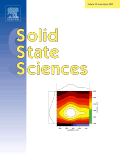
SOLID STATE SCIENCES
Advancing the Frontiers of Materials ResearchSOLID STATE SCIENCES is an influential academic journal published by Elsevier, focusing on advancements in the fields of chemistry, condensed matter physics, and materials science. With an ISSN of 1293-2558 and an E-ISSN of 1873-3085, this journal has been at the forefront of disseminating innovative research since its inception in 1999 and is projected to continue until 2024. Positioned in the prestigious Q2 category in multiple disciplines for 2023, SOLID STATE SCIENCES ranks #87 in condensed matter physics, #101 in general chemistry, and #124 in general materials science within Scopus. Researchers and professionals in these fields will find this journal indispensable, offering open access options that enhance global visibility and accessibility of cutting-edge research, fostering collaboration and innovation. With its commitment to showcasing substantial contributions and novel methodologies, SOLID STATE SCIENCES plays a vital role in shaping the future of materials research.
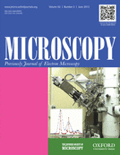
Microscopy
Illuminating the Future of Imaging and AnalysisMicroscopy, published by Oxford University Press, is a prestigious journal dedicated to advancing the field of microscopy and imaging in biological and applied sciences. With a dynamic coverage dating from 1953 to the present, it offers vital insights into the latest techniques and applications across various disciplines, including Instrumentation, Radiology, Nuclear Medicine and Imaging, and Structural Biology. The journal is recognized for its quality, illustrated by its Q2 and Q3 quartile rankings in relevant categories for 2023. Researchers, professionals, and students will find Microscopy an invaluable resource for keeping abreast of contemporary developments and methodologies in the field. As an open-access journal, it promotes equitable access to cutting-edge research and fosters collaboration among the international scientific community, making it essential reading for anyone involved in microscopy research and its applications. For more information, please visit their site for access options and contributions.

JOURNAL OF ELECTROCERAMICS
Elevating Knowledge in Ceramics and Electronic MaterialsJOURNAL OF ELECTROCERAMICS, published by SPRINGER in the Netherlands, serves as a pivotal platform for advancing the field of electroceramics since its inception in 1997. With a keen focus on innovative materials and applications, this journal covers diverse areas encompassing ceramics and composites, condensed matter physics, and electronic materials, significantly contributing to interdisciplinary research. Although currently not an Open Access publication, the journal's engagement in rigorous peer review ensures the dissemination of high-quality research, supported by its respectable Q3 ranking in several relevant categories in 2023. Researchers and professionals will find value in its comprehensive scope, showcasing cutting-edge developments that shape the future of engineering and materials science. The JOURNAL OF ELECTROCERAMICS continues to play a crucial role in bridging theoretical discoveries with practical applications, making it an indispensable resource for students, scholars, and industry experts alike.
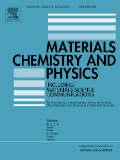
MATERIALS CHEMISTRY AND PHYSICS
Fostering Excellence in Materials Characterization and ApplicationsMATERIALS CHEMISTRY AND PHYSICS is a leading peer-reviewed journal published by Elsevier Science SA, focusing on the intersection of materials science and condensed matter physics. With an esteemed impact factor and a distinguished reputation in its field, this journal holds a Q1 ranking in Condensed Matter Physics and a Q2 ranking in miscellaneous Materials Science categories as of 2023. Spanning over three decades since its inception in 1983, it provides a vital platform for researchers, professionals, and students to disseminate cutting-edge findings and innovations in materials characterization, properties, and applications. The journal is indexed in Scopus, boasting impressive rankings that reflect its commitment to publishing high-quality research. Although it does not currently offer an Open Access option, it remains an essential resource for those seeking to stay at the forefront of materials chemistry and physics.
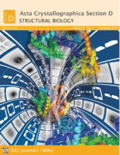
Acta Crystallographica Section D-Structural Biology
Elevating the Science of Crystallography and BiologyActa Crystallographica Section D - Structural Biology is a premier academic journal published by the International Union of Crystallography, dedicated to advancing the field of structural biology. With an ISSN and E-ISSN of 2059-7983, this journal plays a crucial role in disseminating high-quality research, covering a wide spectrum of topics including crystallography, macromolecular structures, and their biological implications. Operating under a Q2 category ranking in the realm of structural biology, it highlights innovative and transformative studies that enhance our understanding of molecular architecture. The journal is notably indexed in Scopus, where it holds a rank of #28/49 in its category, placing it in the 43rd percentile. This robust positioning underscores its significance to the research community. With a reader base that includes leading scientists, professionals, and students in the biosciences, Acta Crystallographica Section D is integral for those looking to stay updated on cutting-edge discoveries in structural biology. The journal is available for readership and serves as a pivotal platform for researchers aiming to share their findings and contribute to the scientific dialogue.

CRYSTALLOGRAPHY REPORTS
Unveiling Innovations in Materials ScienceCRYSTALLOGRAPHY REPORTS (ISSN: 1063-7745, E-ISSN: 1562-689X), published by PLEIADES PUBLISHING INC, is a pivotal journal in the fields of chemistry, condensed matter physics, and materials science. Established in 1996 and continuing through to 2024, it serves as a vital resource for researchers and professionals seeking to disseminate and engage with contemporary advancements in crystallography. While currently not classified as open access, the journal's rigorous peer-review process ensures the publication of high-quality research, making it a respected entity within the academic community. With a categorization in the Q4 quartile for its respective fields and notable Scopus rankings, CRYSTALLOGRAPHY REPORTS is committed to fostering an understanding of crystallographic techniques and their application across scientific disciplines. This journal is essential for those looking to stay abreast of the latest findings and methodologies in crystallography, providing a platform for impactful discussions and collaborations.
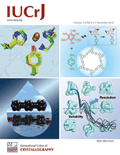
IUCrJ
Illuminating the Path to Groundbreaking DiscoveriesIUCrJ, published by the International Union of Crystallography, is a leading open-access journal dedicated to advancing knowledge in the fields of Biochemistry, Chemistry, Condensed Matter Physics, and Materials Science. Since its inception in 2014, IUCrJ has quickly established itself as a prestigious platform for high-quality research, achieving a remarkable record as a Q1 journal across its categories in 2023. With an increasing impact in the scientific community, evidenced by impressive Scopus rankings, IUCrJ offers unparalleled access to groundbreaking discoveries and methodologies that contribute to the understanding and application of crystallography in various disciplines. The journal’s commitment to open access ensures that research is readily available to a global audience, fostering collaboration and innovation in the scientific community. IUCrJ is an essential resource for researchers, professionals, and students aiming to stay at the forefront of crystallographic research and its interdisciplinary applications.
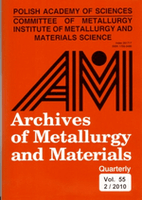
ARCHIVES OF METALLURGY AND MATERIALS
Unlocking Innovations in Metals and AlloysArchives of Metallurgy and Materials is a prestigious open-access journal published by the Polish Academy of Sciences, Institute of Metallurgy and Materials Science. With its ISSN 1733-3490 and E-ISSN 2300-1909, this journal has been a critical resource for researchers and professionals in the field of materials science since its establishment in 2004. The journal focuses primarily on advancements in metals and alloys, contributing to the growing body of knowledge in this dynamic and evolving discipline. As acknowledged in the 2023 Scopus rankings, it currently holds a Q3 category in both Metals and Alloys with a rank of #117 out of 176 journals, indicating its commitment to quality research despite being relatively young in the indexing landscape. With its open-access policy initiated in 2010, the journal aims to enhance the dissemination of scientific findings and encourage collaboration among the global materials science community. Researchers, students, and industry professionals are invited to explore the valuable insights and innovations showcased within Archives of Metallurgy and Materials, contributing to the advancement of material technologies and applications.
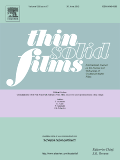
Thin Solid Films
Unveiling the Science Behind Advanced Thin Film SolutionsThin Solid Films, published by ELSEVIER SCIENCE SA, is a highly regarded journal in the fields of materials science and physics, specifically focused on the properties and applications of thin films. Established in 1967, this journal has been a leading platform for disseminating research on surfaces, coatings, and advanced materials. With its consistent publication through the notable HIndex of scholarly impact, this journal showcases a diverse range of studies ranging from electronic, optical, and magnetic materials to novel surface and interface engineering. In recent evaluations, Thin Solid Films has achieved significant rankings, including a Q2 position in Materials Chemistry and Metals and Alloys, reflecting its relevance and importance in ongoing scientific discourse. Although it does not offer open access, it provides a vital resource for researchers, professionals, and students seeking to advance their knowledge and expertise in thin film technology. The journal's commitment to quality and innovation makes it an essential publication for anyone engaged in the field.